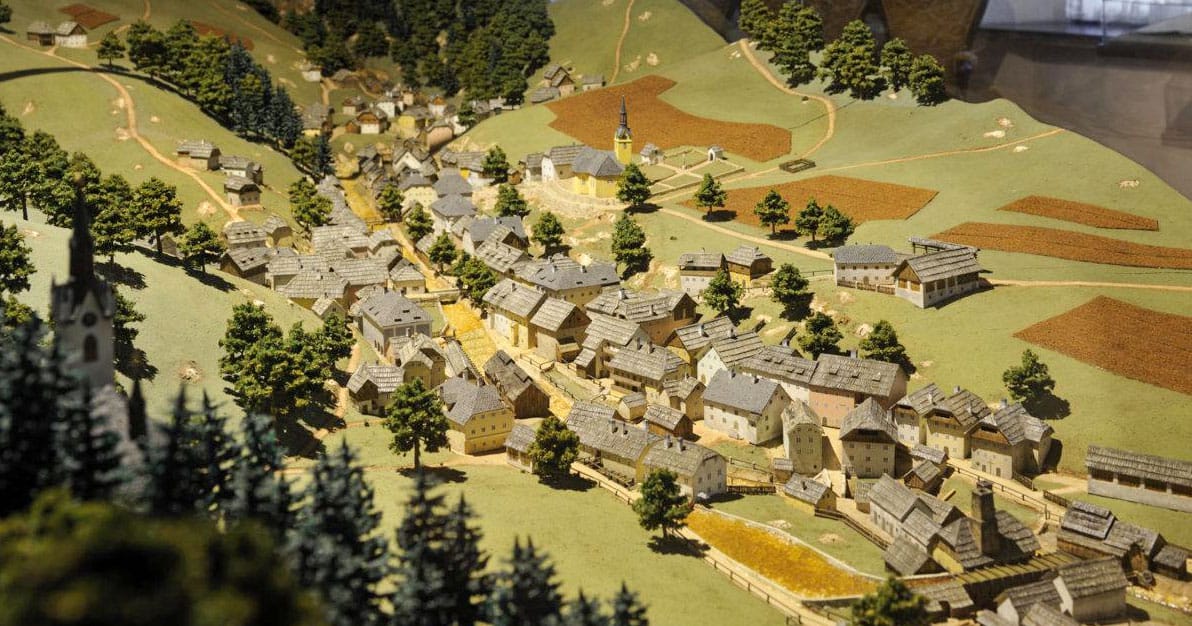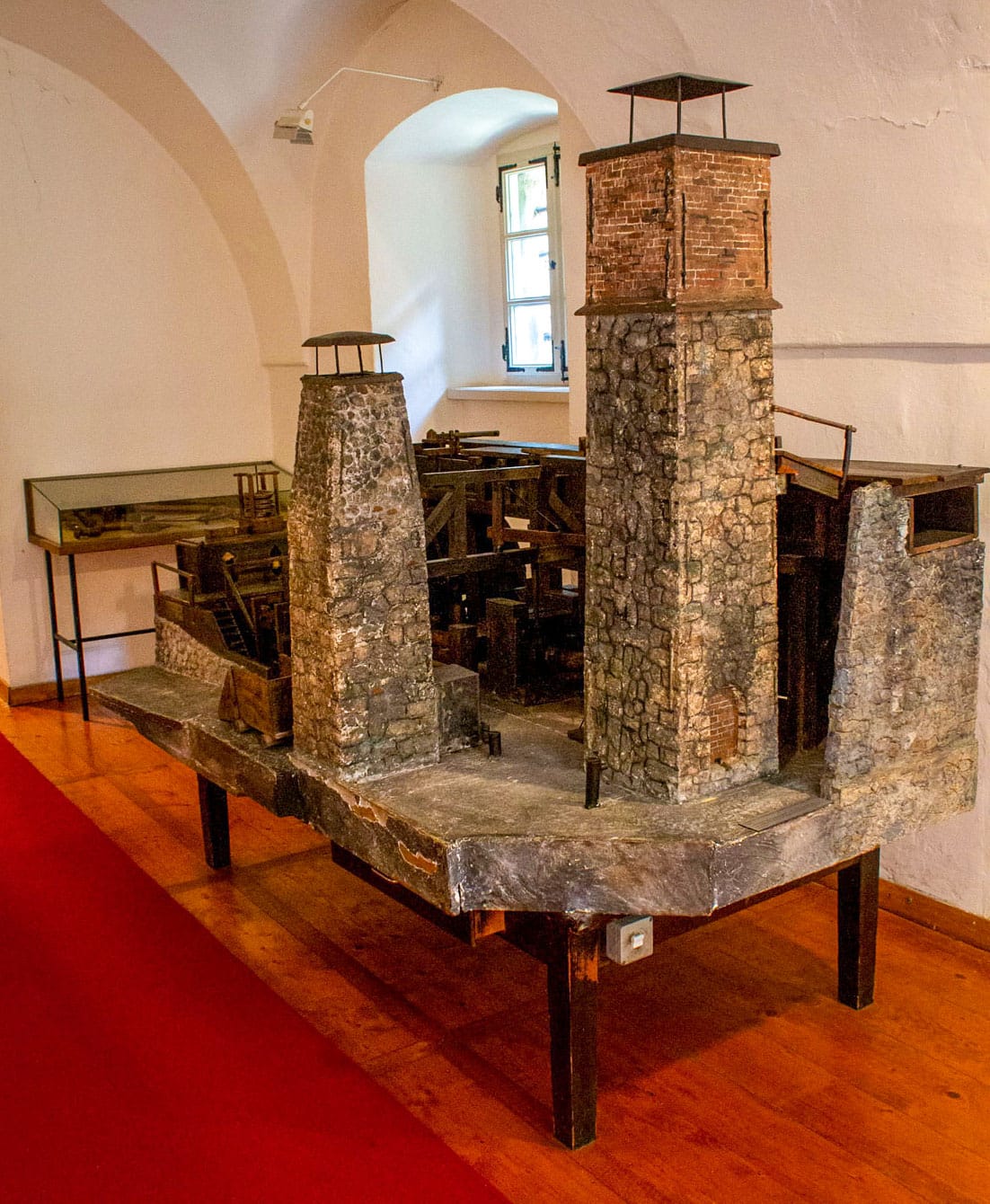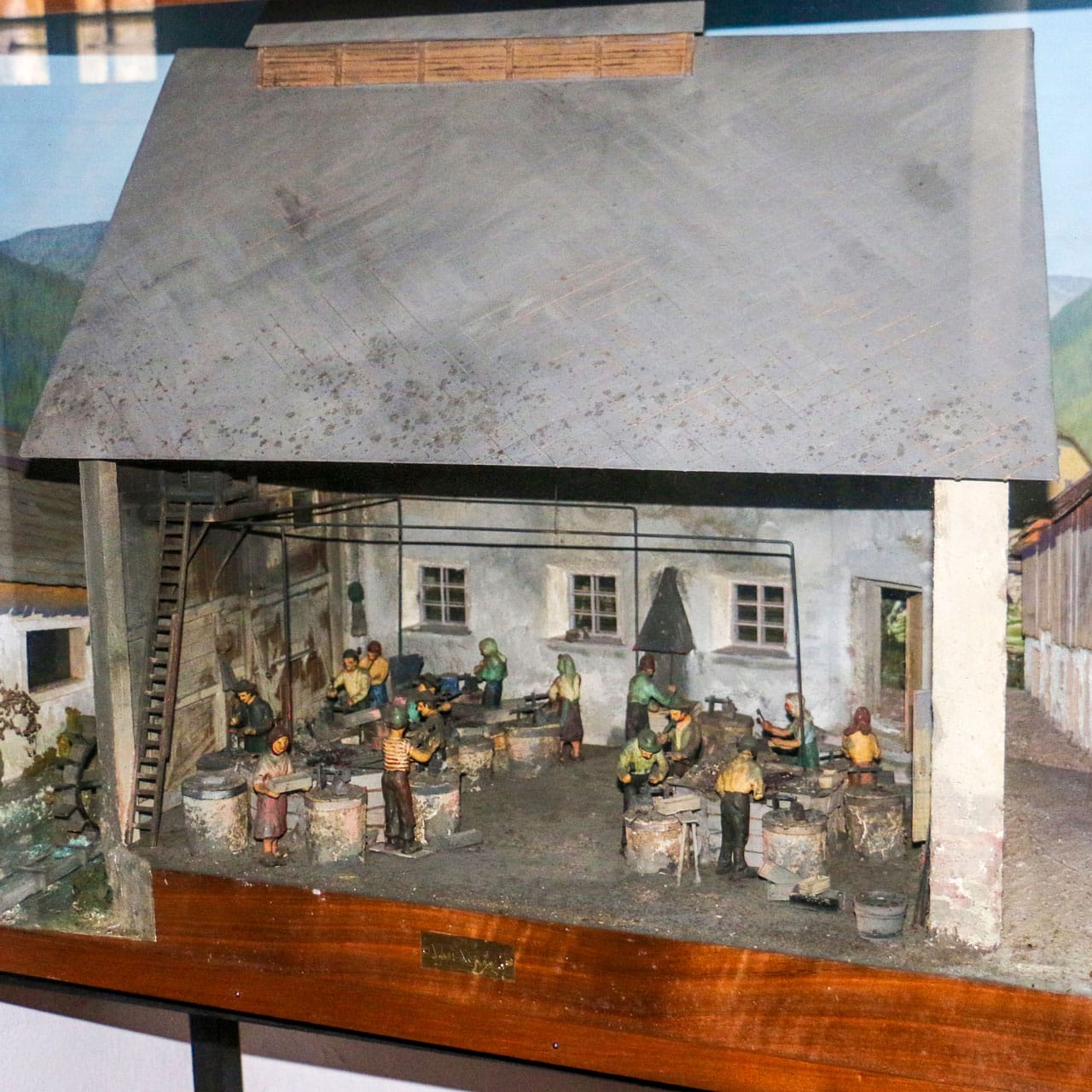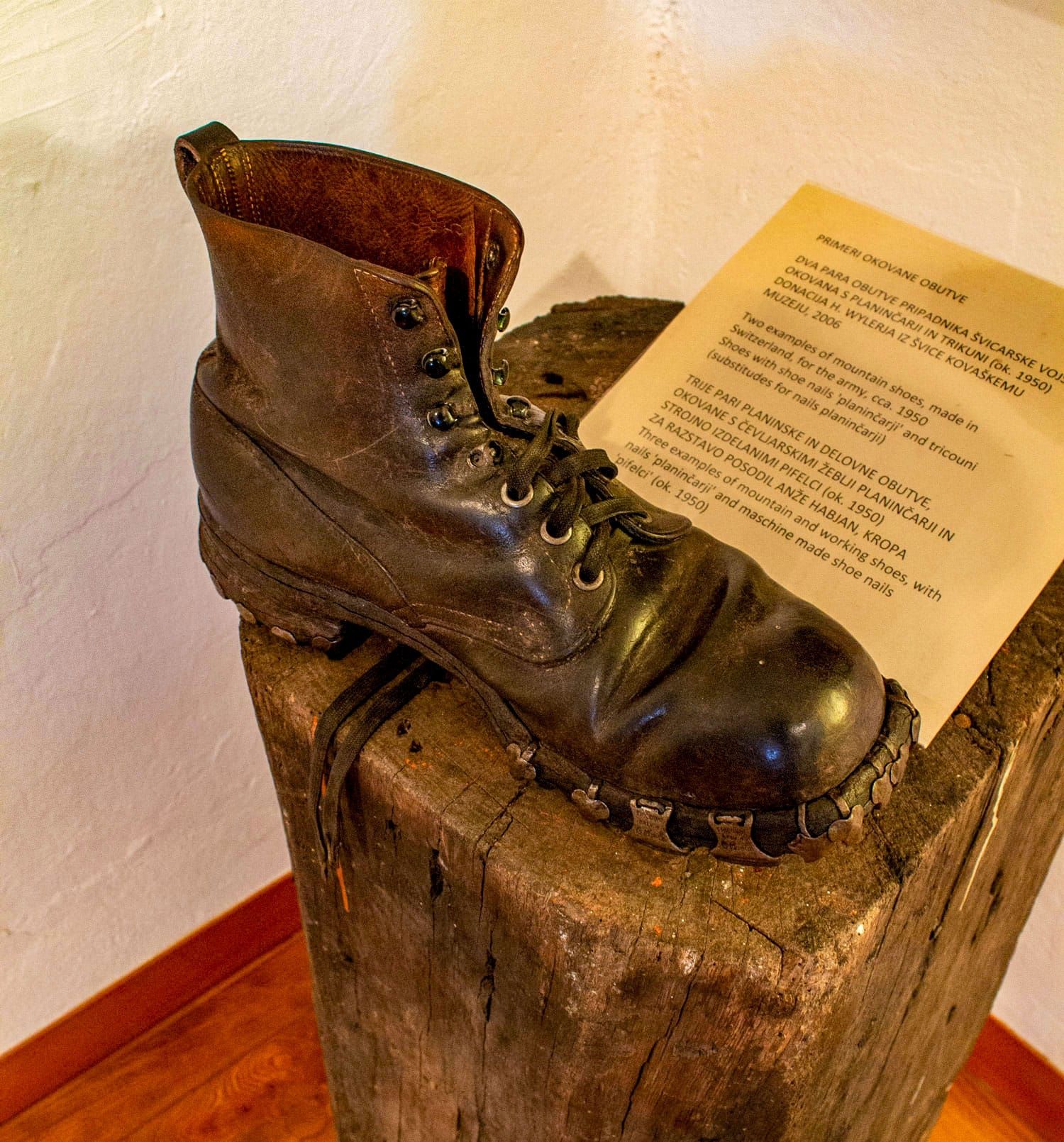Home / Iron Forging Museum / Notable objects of Iron Forging Museum
Notable Objects of Iron Forging Museum
Description
The large 3×5 metre model shows Kropa in the 19th century: buildings with typical ironworkers’ houses in the central part of the former market settlement, St. Lenart’s church and the Church of the Mother of God, and the houses of former miners and charcoal workers on the outskirts of the village.
The locations of the former ironworking and blacksmithing plants are shown: the Lower and Upper foundries and the vigenjc Vice nailmaking forges, placed along artificially constructed water channels (known as ‘rake‘) along the Kroparica stream.
Model of the Upper Foundry in Kropa
Description
The model shows the production of iron for nail making in Kropa in the 19th century, when older forms of smelting furnaces – sometimes also known as ‘wolf furnaces’ – (Slovenska peč – Slovenian furnace) were replaced by larger furnaces alongside which treatment furnaces were constructed for the processing of crude iron into iron to be forged. It combined a smelting furnace (blast furnace), a water-powered hammer and two water wheels that propelled the water-powered hammer and bellows. The model was designed by the Kropa carpenter Anton Ažman to mark the opening of the museum in 1952.
Diorama of the vigenjc Vice forge
Description
The diorama of the vigenjc Vice forge was made in 1936 by the first Nailmakers’ Industrial Cooperative in Kropa and Kamna Gorica for the Museum of the History of Kropa, plans for which had already been drawn up in Kropa prior to World War II. The diorama is the work of the Viennese sculptor Ferdinand Schwarz. It depicts work in a nailmakers’ forge: male and female blacksmiths beside blacksmith’s anvil, which are arranged around a blacksmiths’ hearth. Outside the foundry there are water channels (known as ‘rake’) and a water wheel which propelled the bellows to deliver air to the blacksmiths’ hearths.
Sale Boards with Nails from Kropa
Description
The Iron Forging Museum has four nail boards with patterns of nails from the second half of the 19th century that were designed to showcase the range of nails on sale. The boards feature nails with double and round heads, a specimen of railway nails, and a range of horseshoe and shoe nails, among which are kamelarji, horseshoe nails for the Balkan market and older designs – so-called planinčarji nails for studding heavy mountain footwear.
Studded Shoes
Description
Military mountaineering boots, studded with planinčarji nails and trikuni nails (machined substitutes for planinčarji nails) were donated by Hansruedy Wyler from Switzerland in 2006. He donated them to the Iron Forging Museum because of the links between Kropa’s nailmaking industry and the shoemaking industry in Switzerland during the years 1933 to 1955. Planinčarji were manually forged nails for studding the edges of the hiking part of the soles of hiking, military and work boots.





